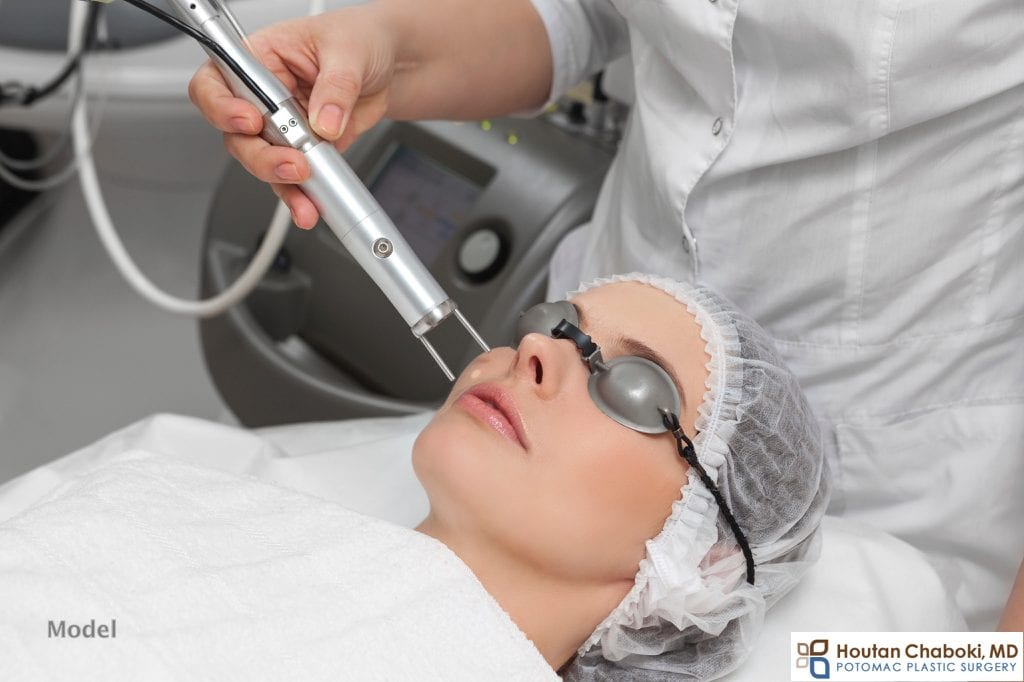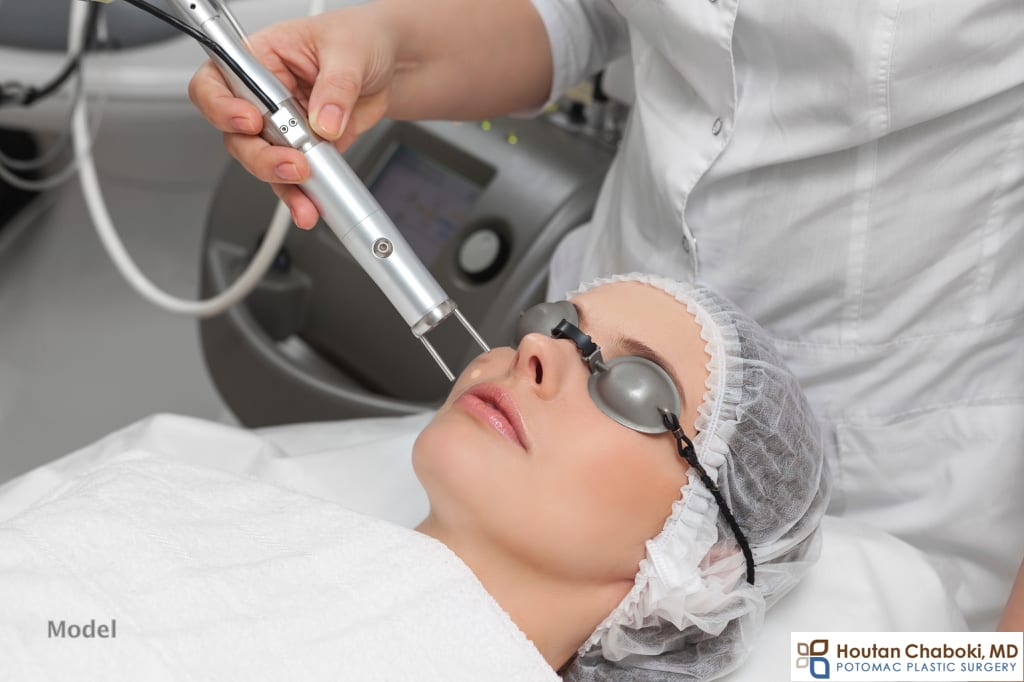The field of cosmetic medicine and dermatology has exploded from three main factors: wrinkle relaxers (i.e. Botox®, Dysport®, Xeomin®), facial fillers (i.e. Restylane®, Juvederm®, Belotero®), and laser rejuvenation. We’ve previously discussed how the non-surgical cosmetic treatments have grown exponentially and will likely continue to grow in the foreseeable future.
Patients can be overwhelmed with variety of choices to improve their appearance. With laser rejuvenation, there is an additional layer of complex, technical information that can be hard to decipher.
The traditional ablative laser surgery with a CO2 laser used to be the only option to rejuvenate the skin. The CO2 laser would remove the top layer of skin to improve its appearance. This older approach, while still a good option today, often requires a long healing and recovery period. Results could be a dramatic improvement, but many professional Washingtonians could not afford the downtime with their work, school, or family schedules.
A plethora of laser options are now available that treat many types of cosmetic skin conditions without the prolonged recovery period. Some lasers are better for skin pigmentation, while others are better for skin surface wrinkles or scars. As with any cosmetic procedure, the dermatologist or plastic surgeon will tailor the laser treatment to each individual. One laser does not fit all patients.
Ablative vs. Non-ablative lasers vs. Fractional lasers
Ablative lasers work by vaporizing the outer layers of skin. The skin heals with collagen production and regenerates a fresher, younger layer of skin. The ablative laser treatments are more invasive and have longer recovery, but tend to produce the best clinical results.
Examples of ablative lasers: CO2, erbium
Non-ablative lasers heat up deeper components of skin, while leaving the surface untouched. Down time and recovery is much quicker, but clinical results are usually more subtle. Multiple treatments are required.
Examples of non-ablative lasers: Intense Pulsed Light, pulsed dye, Smooth Beam®, Vbeam®, N-lite®, Lux 1540®
Fractional lasers are somewhat in-between ablative and non-ablative lasers. Instead of vaporizing all of the skin surface like ablative lasers or none of the surface like non-ablative lasers, fractional lasers use CO2 or erbium to create many tiny holes in the skin. A “fraction” of the skin is vaporized. Downtime is also in between ablative and non-ablative lasers.
Examples of fractional lasers: Fraxel®, Cooltouch®, QuadraLASE®, Halo®, Affirm®, Active-Fx®
Fraxel® Laser
Target: Fine lines and wrinkles, pigmentation, sun damage, scars
Fraxel is a fractional laser that promotes natural healing to improve skin appearance, whether from fine lines or scars on the face and body. The Fraxel laser produces many very tiny holes in the skin, known as microscopic treatment zones. The area around this microscopic zone is left in intact. The natural healing process replaces skin imperfections to create healthier and tighter skin. The advantage of this microscopic method is that patients are often back to work in only a few days.
QuadraLASE® Laser
Target: acne scars, fines lines and wrinkles, sun damage, scars
The QuadraLASE laser is another fractional CO2 laser that delivers carbon dioxide laser beams to stimulate collagen production. The fractional component of this laser allows the laser every to affect only a fraction of the skin surface, instead of the entire surface. This fractional laser improves recovery and minimizes downtime, while still maximizing aesthetic results. Treatment takes about an hour with a downtime of approximately one week
Intense Pulsed Light Photofacial
Target: acne scars, dull complexion, enlarged pores, redness, rosacea, sun damage
Intense Pulsed Light (IPL) photo facial is non-ablative laser that rejuvenates the skin with minimal downtime. A series of several office treatments over several months improves one’s appearance.
Smooth Beam® Laser
Target: acne scars, acne, sebaceous gland hyperplasia, scars
The smooth beam laser is more often requested by patients who suffer from acne. This non-ablative laser also stimulates new collagen formation. Treatment takes about 15 minutes and usually requires no downtime.
Vbeam® Laser
Target: acne, vascular lesions, port wine stain, rosacea, scars
Vbeam is another non-ablative laser that targets blood vessels in the skin without damaging the surrounding skin. The upper layers of skin are cooled with a mist before each laser treatment to improve patient comfort.
What does laser skin rejuvenation cost?
Cost will vary among region, physician, and the specific laser. Generally laser skin rejuvenation costs approximately $1000 to $3000 per treatment. Make sure to factor the total cost if the specific laser requires multiple treatments for your desired result. In addition, factor in the cost of downtime and recovery after treatment.
Which laser treatment is best for your skin?
There isn’t one best laser, and a laser may not be the best option. Chemical peels, wrinkle relaxers, or facial fillers may be more appropriate for those considering facial aesthetic treatment. For example, Crow’s feet wrinkles are generally better treated by Botox rather than a laser treatment. As with plastic surgery, the physician will examine the skin and facial structures and have a conversation with the patient to determine their personal goals and develop a treatment plan. Each laser is a tool in the toolbox of the cosmetic physician.
Some specialists will also combine treatments to target different areas, such as Botox for forehead wrinkles, Restylane for lower eyelid bags, and a fractional laser to rejuvenate the skin. Lasers can also be used after facelift or neck lift surgery, as appropriate.
Have you considered a laser procedure? Share your thoughts below.



You have given very good information thank you
Thank you!